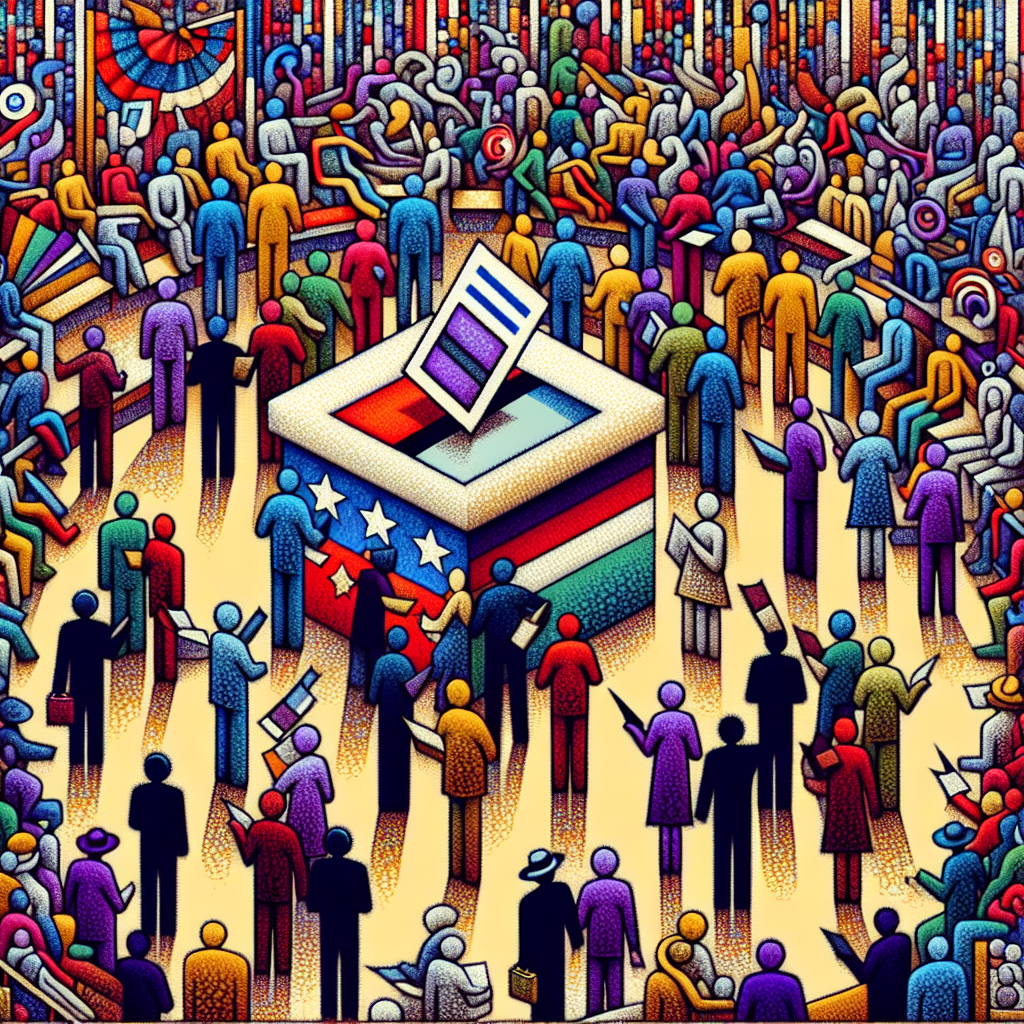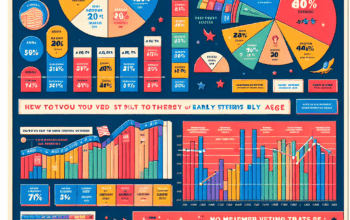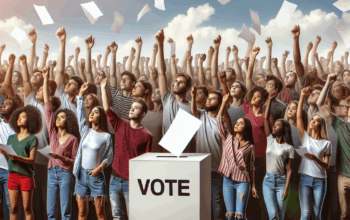Post-Election Analysis: Understanding Voter Behavior
In the rapidly shifting landscape of politics, post-election analysis serves as a vital tool for understanding voter behavior. With the 2024 election now firmly in the rearview mirror, analyzing the voting patterns, demographics, and motivations behind decisions made at the ballot box becomes crucial not only for political parties but also for citizens seeking to comprehend the larger implications of electoral outcomes. In this article, we will delve into voter behavior trends observed in the 2024 elections, employing comprehensive analyses to offer insights into how and why voters made their choices.
Voter Turnout Trends: Who Showed Up and Why?
One of the critical indicators of a healthy democracy is voter turnout, which reflects the engagement level of the electorate. In the 2024 elections, there was a notable surge in voter participation, with an estimated 66% of eligible voters casting their ballots. This increase can primarily be attributed to heightened political polarization, ongoing social movements, and the public’s response to key issues like climate change, healthcare, and economic disparity. Various groups, including millennials and Gen Z, increasingly wielded their political power, showcasing a significant shift in the overall demographics of the electorate.
Moreover, the introduction of new voting technologies and expanded early voting measures played a pivotal role in facilitating higher voter turnout. States implemented initiatives such as secure mail-in ballots and improved polling place accessibility, which encouraged participation from underrepresented communities. This inclusive approach allowed for diverse voices to shape the electoral outcome, marking a noticeable departure from traditional voting patterns. The question remains: will these trends continue in future elections, or will voter engagement revert to previous norms?
Demographic Shifts: Understanding Key Voter Segments
The 2024 election underscored dramatic demographic changes, with particular emphasis on the roles of race, age, and gender in voter behavior. Notably, Hispanic and Black voters demonstrated differing preferences compared to previous elections, indicating a response to party policies and socio-economic conditions. According to exit polls, minority voters increasingly aligned with candidates who resonated with their core concerns, such as social justice, economic opportunity, and immigration reform, suggesting that identity politics played a crucial role in shaping voter preferences this election cycle.
In addition, the divide between urban and rural populations became more pronounced. Urban areas experienced an influx of progressive-oriented voters, driven largely by younger generations prioritizing climate change policies and social equity. Conversely, rural voters showed strong favor for candidates promising economic revitalization centered on traditional industries. The implications of these demographic shifts are profound: understanding the motivations and concerns of different demographic groups is essential for any political strategy aimed at garnering broad electoral support in upcoming elections.
Impact of Social Media on Voter Behavior
The influence of social media on voter behavior has intensified in recent years, particularly during the 2024 elections. Platforms like Twitter, Instagram, and TikTok became battlegrounds for political discourse, shaping public perception and voter sentiment. The proliferation of targeted ads and social media campaigns significantly affected how candidates connected with their constituents, often targeting younger voters with engaging content on pressing issues. For some candidates, social media became a vital tool for mobilizing grassroots support and defining their platforms in relatable, digestible formats.
However, the impact of social media is not without its drawbacks. Misinformation and divisive narratives proliferated across various platforms, potentially skewing voter perceptions and decisions. The rise of echo chambers—where users engage primarily with information that reinforces their beliefs—has led to increased polarization and undermined the overall electoral process. Understanding how social media influences voter behavior is crucial for political strategists as they continue to navigate this complex landscape.
Key Issues Shaping Voter Decisions in 2024
Every election cycle is defined by key issues that resonate with voters, and 2024 was no different. A combination of economic concerns, healthcare accessibility, racial equality, and climate change mobilized various voter segments. Economic discussions centered on inflation, job security, and wage growth dominated conversations among working-class voters. Many sought candidates who promised reforms that would not only stabilize the economy but also enhance living standards.
Healthcare remained a pivotal topic, especially in light of the ongoing COVID-19 pandemic and a subsequent surge in attention to public health systems. Many voters expressed a desire for strong healthcare policies that prioritized universal access and affordability. Candidates who effectively communicated these issues and presented actionable solutions were more likely to gain voter trust and support. Furthermore, environmental concerns shaped the choices of younger voters, emphasizing the urgency of climate initiatives and sustainable practices. The candidates’ stances on these matters were instrumental in delineating their platforms, ultimately influencing voter behavior.
Electoral Outcomes and Lessons Learned
As we dissect the results of the 2024 elections, it is imperative to analyze what these outcomes mean for the future of American politics. The results revealed a deeply divided electorate that calls for introspection and adaptability from political parties going forward. The fact that candidates who embraced inclusivity and equitable policies generally found favor among diverse voter groups signifies that future campaigns should prioritize outreach, representation, and community engagement.
Additionally, the significant role of independent voters demonstrated the importance of appealing to the middle ground. Many voters expressed dissatisfaction with partisan politics, which highlights an opportunity for candidates to develop centrist policies that transcend traditional party lines. Political parties will need to reflect on this bifurcated base and consider strategies that foster unity rather than division.
The lessons learned from this election cycle must not only inform strategies for future campaigns but also encourage a more informed and engaged electorate. Recognizing the factors that influenced voter behavior enables candidates to create resonant messages that connect with the myriad concerns of American citizens.
Conclusion
Post-election analysis of voter behavior in 2024 sheds light on pivotal trends, demographic shifts, and the impact of social media and key issues on electoral outcomes. The significant increase in voter turnout, along with shifts in voter demographics and the role of social media, highlight the evolving landscape of American politics. As we look toward future elections, understanding these factors will be essential for candidates aiming to navigate a divided electorate and engage effectively with an increasingly diverse population. The 2024 elections serve as a mirror, reflecting both the strengths and challenges of democracy—and the path forward remains to be collectively determined.
Frequently Asked Questions
What were the main factors influencing voter turnout in 2024?
Several factors contributed to the voter turnout in the 2024 elections, including heightened political polarization, the introduction of early voting and mail-in ballots, and the engagement of younger voters who prioritize issues like climate change and social justice.
How did demographic trends impact the election results?
Demographic shifts, particularly among minority and younger voters, had a significant impact on election results. These groups increasingly favored candidates who addressed their core concerns, highlighting the importance of understanding voter identities and preferences.
What role did social media play in shaping voter behavior?
Social media emerged as a crucial platform for political discourse in 2024, influencing voter sentiment and engagement. While it facilitated connections between candidates and constituents, it also perpetuated misinformation and polarization, complicating the electoral process.












